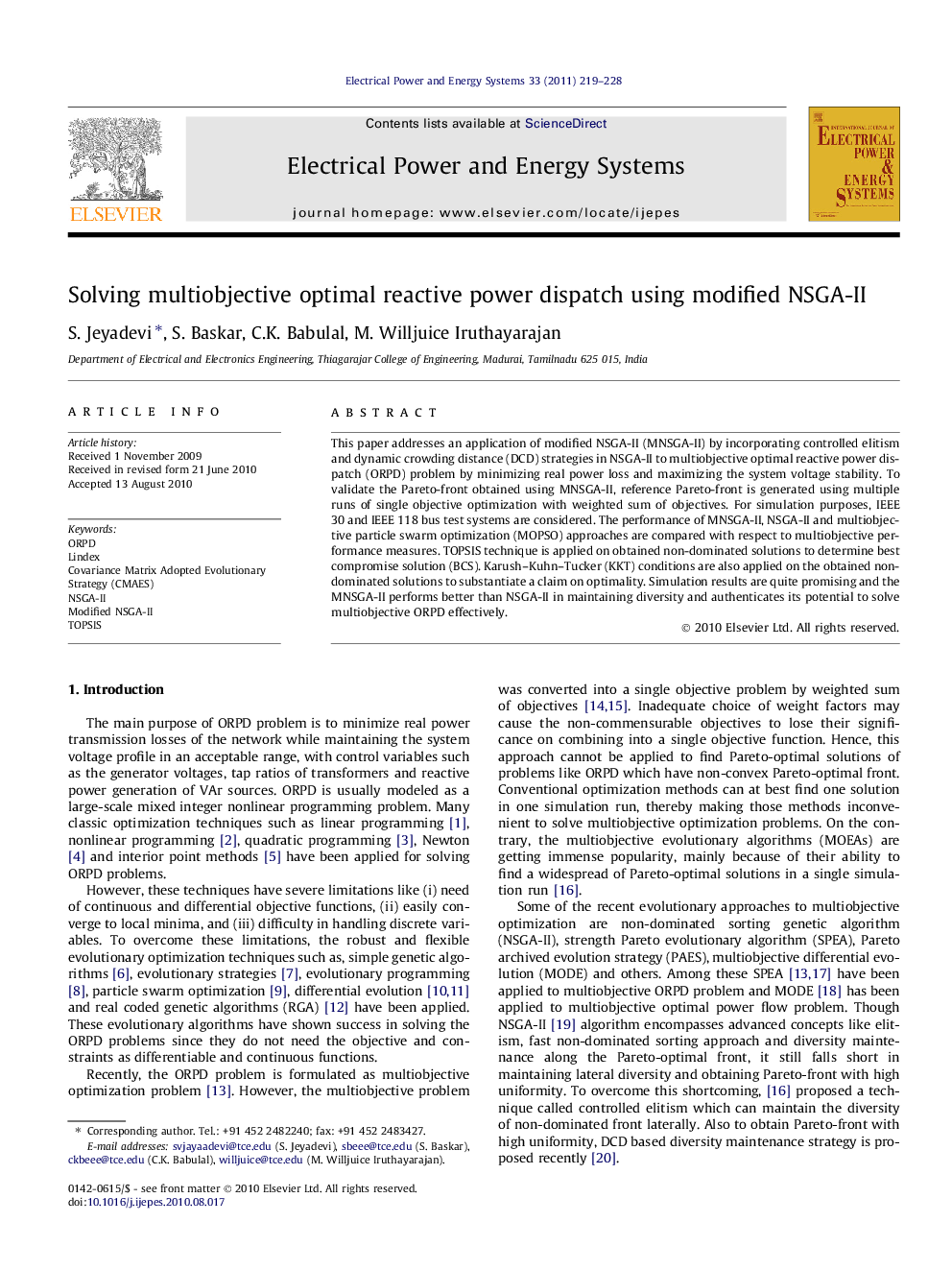| Article ID | Journal | Published Year | Pages | File Type |
|---|---|---|---|---|
| 400022 | International Journal of Electrical Power & Energy Systems | 2011 | 10 Pages |
This paper addresses an application of modified NSGA-II (MNSGA-II) by incorporating controlled elitism and dynamic crowding distance (DCD) strategies in NSGA-II to multiobjective optimal reactive power dispatch (ORPD) problem by minimizing real power loss and maximizing the system voltage stability. To validate the Pareto-front obtained using MNSGA-II, reference Pareto-front is generated using multiple runs of single objective optimization with weighted sum of objectives. For simulation purposes, IEEE 30 and IEEE 118 bus test systems are considered. The performance of MNSGA-II, NSGA-II and multiobjective particle swarm optimization (MOPSO) approaches are compared with respect to multiobjective performance measures. TOPSIS technique is applied on obtained non-dominated solutions to determine best compromise solution (BCS). Karush–Kuhn–Tucker (KKT) conditions are also applied on the obtained non-dominated solutions to substantiate a claim on optimality. Simulation results are quite promising and the MNSGA-II performs better than NSGA-II in maintaining diversity and authenticates its potential to solve multiobjective ORPD effectively.
